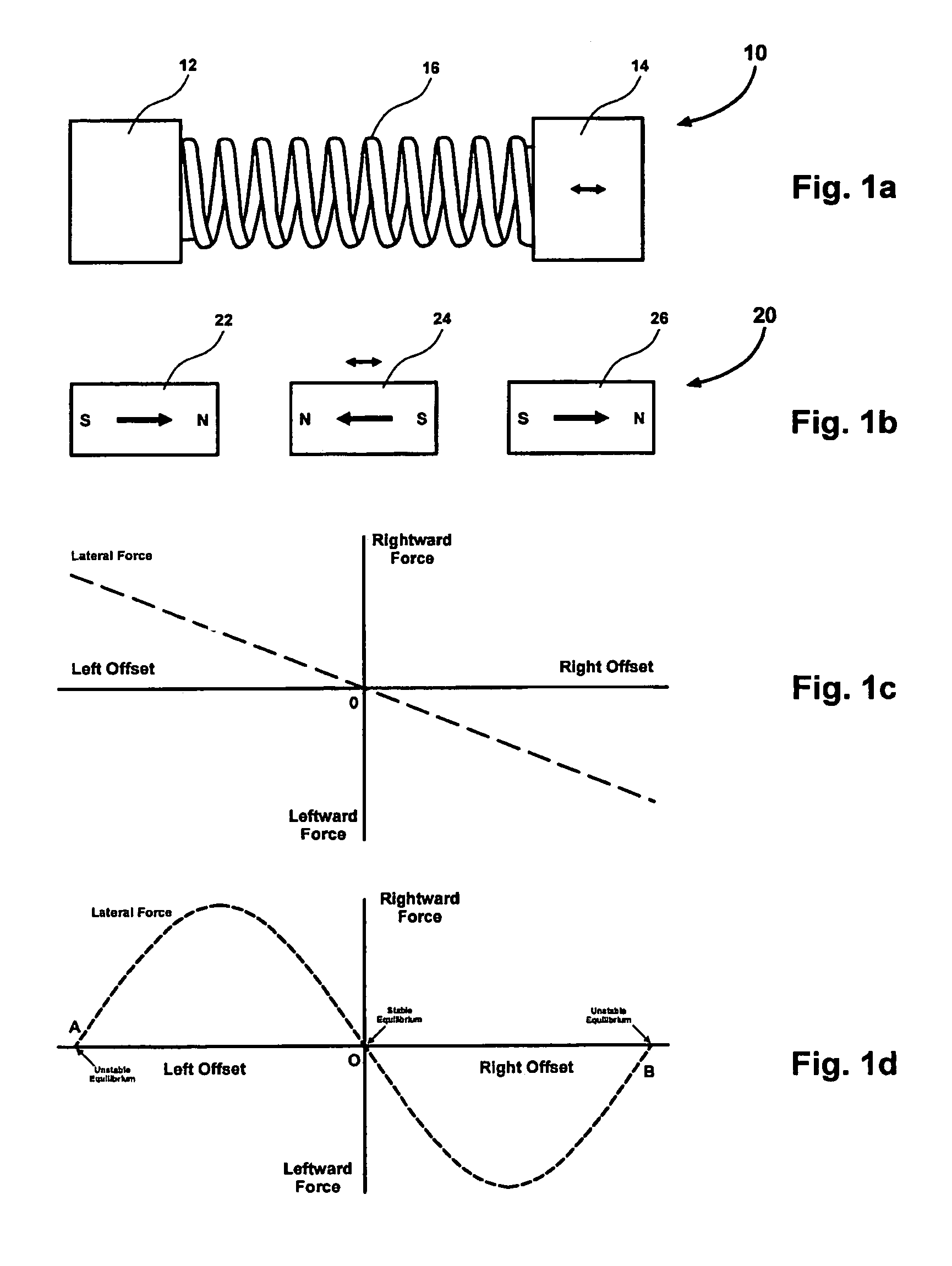Magnetic spring and actuators with multiple equilibrium positions
- Summary
- Abstract
- Description
- Claims
- Application Information
AI Technical Summary
Benefits of technology
Problems solved by technology
Method used
Image
Examples
first embodiment
[0045]With reference to the drawings, FIG. 2a shows an arrangement of magnetic dipoles 30 according to the invention. Here, a row of dipoles 32 is configured in a fixed or stationary array with each dipole rotated 180 degrees with respect to adjacent magnets. The poles depicted are horizontal but other angles would be acceptable as long as the rotation requirement is met. Such rotation requirement is utilized within Halbach arrays as discussed within U.S. Pat. No. 6,374,746 issued to Fiske on Apr. 23, 2002, U.S. Pat. No. 6,684,794 issued to Fiske et al. on Feb. 3, 2004, and U.S. patent application Ser. No. 10 / 412,082 filed on Apr. 10, 2003 by Fiske et al. and published on Oct. 16, 2003 as US Patent Application Publication No. 2003-0192449, each document of which is herein incorporated by reference. Accordingly, arrays 32 and 34 of FIG. 2a can be considered as Halbach arrays with a rotation increment of 180 degrees.
[0046]A movable array of magnets 34, using a similar configuration of...
fourth embodiment
[0049]FIG. 5a shows an arrangement of magnets 80 similar to that of FIG. 4a but modified according to the invention. Here, the magnets are configured as concentric Halbach arrays, in which the direction of magnetization of each magnet in outer array 82 is rotated clockwise as the array is traversed clockwise. The direction of magnetization in inner array 84 is rotated counterclockwise as the array is traversed clockwise. Again, this has the effect of focusing the field produced by each array toward the opposing array to produce higher torque per unit of mass of magnet material. Arrays 82 and 84 shown in FIG. 5a use six magnets per wavelength and three wavelengths per array for a total of 18 magnets per array. However, it should be readily understood that more or less magnets may be used to produce shorter or longer wavelengths without straying from the intended scope of the present invention. Arrays 62 and 64 of FIG. 4a can be considered Halbach arrays with a rotation increment of 1...
PUM
 Login to View More
Login to View More Abstract
Description
Claims
Application Information
 Login to View More
Login to View More - R&D
- Intellectual Property
- Life Sciences
- Materials
- Tech Scout
- Unparalleled Data Quality
- Higher Quality Content
- 60% Fewer Hallucinations
Browse by: Latest US Patents, China's latest patents, Technical Efficacy Thesaurus, Application Domain, Technology Topic, Popular Technical Reports.
© 2025 PatSnap. All rights reserved.Legal|Privacy policy|Modern Slavery Act Transparency Statement|Sitemap|About US| Contact US: help@patsnap.com



